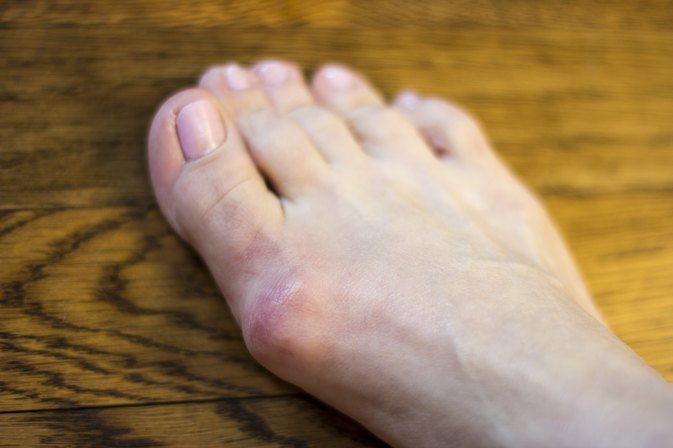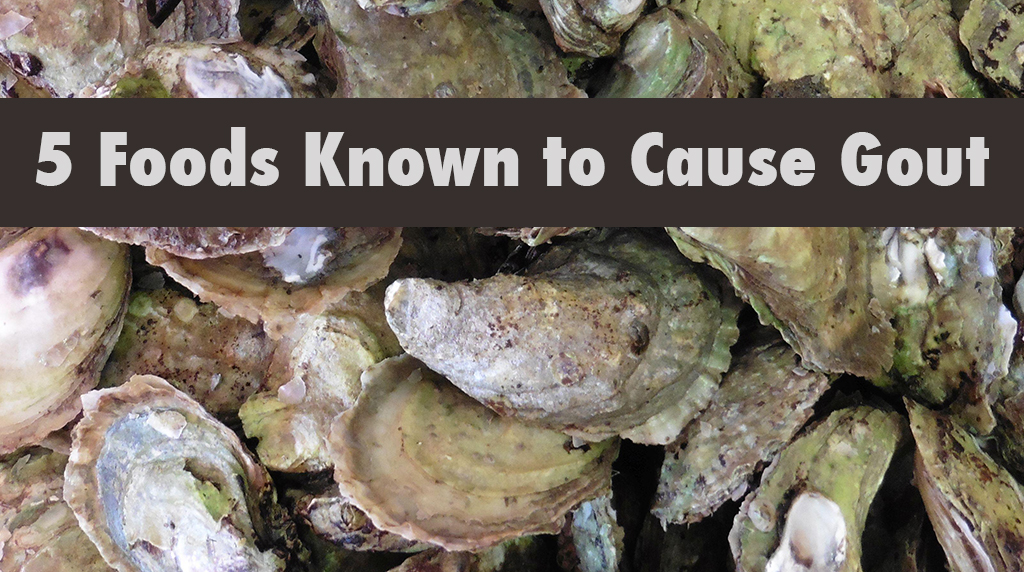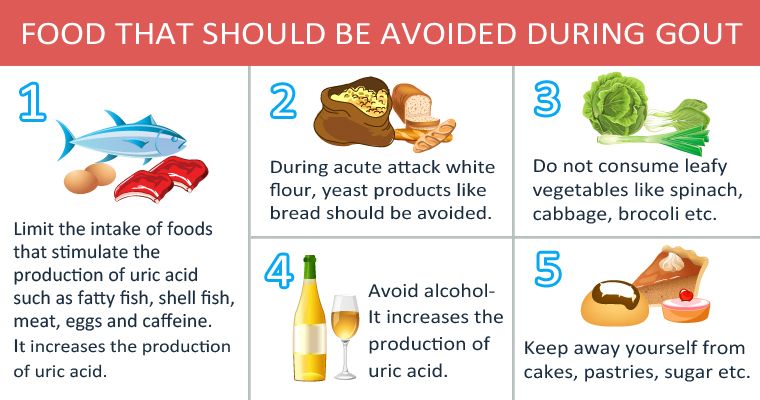What Is A Low
A low-purine diet involves reducing your intake of certain foods to decrease the purine metabolism pathways, which are responsible for converting purines into uric acid.
Healthy whole foods like fruits, veggies, nuts, seeds and legumes are all encouraged as part of the diet while ingredients like red meat, seafood, wild game and organ meats should be consumed only in moderation.
Foods high in fructose, which is a type of simple sugar, should also be limited. Fructose is broken down into purine, which can increase levels of uric acid in the body. Although fructose is found naturally in fruits, these foods are also high in fiber, vitamins and minerals that can offset any negative effects.
Conversely, soft drinks, fruit juice and processed foods all typically contain a concentrated amount of fructose and should be limited on a low-purine diet.
Low-purine diets are recommended for those with gout or certain types of kidney stones to prevent flare-ups and minimize symptoms. A low-purine diet for dogs is also sometimes recommended to prevent uric acid kidney stones from forming in certain breeds who may be more susceptible.
Read Also: Best Over The Counter Treatment For Gout
Sneaky Gout Triggers: Yeast Extract Msg Fructose Sauces
Yeast extract and MSGâYeast extract plus other additives is basically MSG . MSG powder contains purines that immediately metabolizes to uric acid. Although there is proof linking yeast to purine content via alcoholic beverages, only a few sources warn yeast extract as a high-risk gout trigger.
MSG and yeast extract are flavor-enhancers in several products such as processed meat, canned food, bouillon, sauces, soup mixes, gravies, and salad dressings. Since the ingredient percentages are not typically listed or shared, it is very risky for people with chronic gout .
Manufactures will camouflage MSG by listing these these sub-ingredients instead of yeast extract, protein isolate, hydrolyzed vegetable protein, hydrolyzed yeast, and soy extracts.
MSG is not only associated with gout. It is also linked to other health problems and allergies. Known side effects from MSG overconsumption are heart palpitations, headaches, numbness and drowsiness.
Fructose â Even though there is plenty of evidence that fructose causes the body to produce purines, most major sources did not account for it as a major gout trigger. Research from 2016 linked fructose consumption to increased uric acid levels which leads to gout flares.
Sauces â Popular sauces that may cause or contain purines are fish sauce, worcestershire sauce , oyster sauce, barbecue sauce , and Maggi seasoning .
Dont Be Scared Of Beans Legumes Vegetables
The most inconsistent recommendations are for beans, legumes and certain vegetables. No source indicated to avoid these food groups. However, many state they are high risk like some seafood.
From this particular purine table, beans, lentils and peanuts have far less purines than the other food groups mentioned previously. Therefore, they are not as high-risk for gout. Keep in mind, cured or dried food, such as beans, will have a higher purine concentration per weight because of shrinkage.
Some sources caution eating asparagus, cauliflower, peas, chickpeas, spinach and broccoli because it contains more purines than most vegetables. However, the purine amounts for asparagus, spinach and broccoli are less than half of pork or beef. Lastly, a recent study concluded purine-rich vegetables are less of a risk than animal based purines.
Don’t Miss: Are Almonds High In Purines
Who Should Diagnose And Treat Gout
The disease should be diagnosed and treated by a doctor or a team of doctors who specialize in care of gout patients. This is important because the signs and symptoms of gout are not specific and can look like signs and symptoms of other inflammatory diseases. Doctors who specialize in gout and other forms of arthritis are called rheumatologists. To find a provider near you, visit the database of rheumatologistsexternal icon on the American College of Rheumatology website. Once a rheumatologist has diagnosed and effectively treated your gout, a primary care provider can usually track your condition and help you manage your gout.
Dont Miss: Is Onion Bad For Gout
Using Tart Cherry Juice For Gout

Tart cherry juice may help decrease uric acid levels and inflammation in gout. Research is limited, with often small numbers of study participants and short-term follow-up.
Nevertheless, a 2019 review of six studies that looked at the effect of cherry juice or cherry extract intake on gout concluded that cherry intake was associated with a reduced risk of gout attacks. Researchers did note that larger, more long-term studies are needed to clarify this association.
When choosing tart cherry juice, be sure to look for unsweetened varieties to help reduce the amount of added sugar in your diet.
Read Also: Is Rice Good For Gout
How Does Food Affect Gout
If you have gout, certain foods may trigger an attack by raising your uric acid levels.
Trigger foods are commonly high in purines, a substance found naturally in foods. When you digest purines, your body makes uric acid as a waste product .
This is not a concern for healthy people, as they efficiently remove excess uric acid from the body.
However, people with gout cant efficiently remove excess uric acid. Thus, a high-purine diet may let uric acid accumulate and cause a gout attack (
10 ).
Foods that commonly trigger gout attacks include organ meats, red meats, seafood,alcohol and beer. They contain a moderate-to-high amount of purines .
However, there is one exception to this rule. Research shows that high-purine vegetables do not trigger gout attacks .
And interestingly, fructose and sugar-sweetened beverages can increase the risk of gout and gout attacks, even though theyre not purine-rich (
16 ).
For instance, a study including over 125,000 participants found that people who consumed the most fructose had a 62% higher risk of developing gout .
On the other hand, research shows that low-fat dairy products, soy products and vitamin C supplements may help prevent gout attacks by reducing blood uric acid levels (
Summary: Foods can either raise or lower your uric acid levels, depending on their purine content. However, fructose can raise your uric acid levels even though it is not purine-rich.
What Increases Your Chances For Gout
The following make it more likely that you will develop hyperuricemia, which causes gout:
- Being male
Read Also: Are Almonds Bad For Gout
Best Diet For Gout: What To Eat What To Avoid
We include products we think are useful for our readers. If you buy through links on this page, we may earn a small commission. Heres our process.
Gout is a type of arthritis, an inflammatory condition of the joints. It affects an estimated 8.3 million people in the US alone (
Fortunately, gout can be controlled with medications, a gout-friendly diet and lifestyle changes.
This article reviews the best diet for gout and what foods to avoid, backed by research.
Purines The Root Cause Of Hyperuricemia
A purine is an organic compound usually found in the same foods that contain protein. To break down purines the liver must produce uric acid. When there is a large presence of purines, the liver tends to produce more uric acid than the kidneys can filter out of the body. Hyperuricemia is the condition when uric acid levels are above normal levels. The excess uric acid builds up at a joint and causes inflammation and pain, which are symptoms of gouty arthritis or gout.
Donât Miss: Onion And Gout
Recommended Reading: Almond Good For Gout
Organ Meats Are Extremely High In Purines And Should Also Be Avoided
Organ meats, known as Offal, contain by far the most purines of any food in the human diet.
The most common forms of offal in the Western diet include liver , brain, heart, kidneys, and a mixture called Pâté.
Below is the purine content of a handful of foods. Note this is just an example Ive selected, and you can find much more extensive lists on Goutpal or here.
Purine Content of Food :
Consider that values listed are per 100 grams, so portion sizes must be taken into account Meat portions we eat tend to be heaviest.
Previous studies have not differentiated between intake of conventional meat and offal, so recommendations have to be the same. Given the strong link between meat intake and gout which is based on purine content alone offal should definitely be avoided too.
Somewhat contradictory to the purine-gout theory, consumption of purine-rich vegetables is not associated with an increased risk of gout .
Researchers speculate this could be due to a lower bioavailability of purines in vegetabes, as well as other nutrients which may offset the harmful effects of their purines.
Summary: Organ meats are some of the highest purine foods and should be completely avoided if you suffer gout attacks.
What Foods Are Good For Gout
Dietary management of gout focuses on reducing the amount of uric acid in the system and attaining and maintaining a healthy body weight.
Foods that may help keep gout in check are
- Fresh fruits and vegetables such as berries, oranges, bell pepper and pineapple
- Low-fat dairy products, such as yogurt and skimmed milk
- Nuts including nut butters such as almond butter and peanut butter
- Whole grains
- Potatoes, rice, whole-grain bread and pasta
- Eggs
- Oils such as olive oil
- Flax and other seeds
Recommended Reading: Cherry Juice For Gout Mayo Clinic
So There You Have It: 42 Well
*Postscript*
You can change things up by substituting other nutritious options, such as:
- Mashed avocado, chopped red onion & tomato, on toasted sourdough, topped with a poached egg.
- Peanut butter and sliced banana on one wholemeal toast slice.
- Turkey breast instead of chicken breast.
- Baked potato with 1 cup max. of sauteed mushrooms .
- Smoked haddock, grilled tomatoes and poached egg / scrambled eggs.
- Roasted red pepper risotto with brown risotto rice, vegetable stock, no wine.
- Baked or grilled hake with salsa verde and steamed vegetables.
- Wholegrain penne pasta with onion, garlic, red and yellow bell peppers, zucchini, dried Italian herbs, and fresh basil.
Remember the meat, poultry and fish in these listings have to be restricted to a 4 oz serving since they generally have a moderately-high purine content.
But what about pork?
Except in certain religious communities, pork is the most widely consumed meat, so is it safe to eat in a gout diet?
It is, but only in moderation. However, there are several important health and moral issues being hotly debated which I cover in another article: Pork and Gout: Safe For Gout Sufferers?
Foods To Avoid With Gout

People with gout can have a moderate intake of lean meats such as chicken and turkey. They must, however, avoid organ meats such as liver and kidney as they have higher levels of purines, which can cause gout flares. They should also avoid seafood such as shrimp, mussels, anchovies, sardines and lobster as it tends to contain a higher amount of purines.
Other foods to be avoided in gout include:
- Beer and grain liquors such as vodka and whiskey
- Red meat including lamb and pork
- Food products containing a high amount of fructose such as soda and some juices, cereal, ice cream, candy and junk food
Also Check: Allopurinol Side Effects Alcohol
Other Ways To Relieve Symptoms Of Gout
One myth is that if someone is suffering from gout, then they’re probably not eating right. But gout is the result of a mix of both genetics and environmental factors.
“It’s not that their husband or spouse is cheating on their diet, they aren’t sneaking food that they shouldn’t eat, it’s not all diet,” says Dr. Robert Keenan, a rheumatologist at Duke University Health Facility.
The pain from gout can also be treated with non-steroidal anti-inflammatory drugs , like Aspirin or Ibuprofen and by losing weight, if you’re overweight.
The important thing to remember for people who suffer from gout is to maintain a healthy lifestyle. By watching purine-rich food intake, eating more vegetables and less unprocessed foods, watching your weight, and exercising more, gout can be managed effectively.
Who Can Benefit From A Low Purine Diet
Anyone with high uric acid levels in their blood can benefit from reducing high-purine foods. This may help to prevent gout in people with hyperuricemia who havent yet developed the disease. It may also help prevent existing gout from progressing and prevent other complications of hyperuricemia, such as kidney stones.
Read Also: Almonds Good For Gout
High Purine Vegetables Are Ok
Some vegetables and plant foods, such as peas, beans, lentils, spinach, mushrooms, oats, and cauliflower, are high in purines. However, several studies have shown that they do not increase the risk of gout.
In fact, the opposite seems to be true, with a vegetable-rich diet being associated with a lower risk of gout compared with the lower consumption of vegetables. Therefore, you do not need to limit or avoid any vegetables on a gout-friendly diet.
Frequent Consumption Of Certain Fruits May Trigger Recurrent Gout Attacks
High sugar drinks may not be the only stimulant of gout flare ups.
Certain fruits which are a natural source of fructose have also been linked with gout.
This is a highly contentious area, because several studies have linked higher fruit intake with less incidence of gout. This is probably due to their high fibre content .
And unlike fruit juice and other sugar-sweetened drinks, whole fruits are nutritious and generally good for health. There is no disputing this.
However, if you continually have gout attacks despite cutting out alcohol and sugar-sweetened drinks then Im not convinced a large amount of fruits are safe for you. Especially if you are overweight and eat a Western diet.
So cutting back on certain very high-fructose fruits is like a Plan D, if you will.
The link comes back to fructose, which stimulates uric acid production in a similar manner to alcohol. Fructose is naturally found in fruit and honey.
One study found that the consumption of apples or oranges the most popular fruits in this study was linked with an increased risk of gout compared to those who consume less than one serving of fruit per month. No link was found with other fruits however .
While most fruits are very low in fructose, a few are very high. Frequent consumption of these could theoretically causes problems for gout sufferers.
Foods Highest in Fructose per 200 Calories :
Note this list is ranked on a per calorie basis, not per serving.
Read Also: Gout In Heel Pictures
Is High Fructose Corn Syrup A Problem
Yes, absolutely. High-fructose corn syrup is a known factor for gout flare-ups because it raises uric acid levels in your body. Its also used in far more pre-packaged and processed foods than you might think. When youre grocery shopping, always check nutrition labels. If corn syrup is an ingredient in a product, dont buy it.
Where Can I Get Advice About My Diet
An accredited practising dietitian can provide you with personalised advice to give you the confidence to eat in a way that is best for you. APDs are university-qualified experts in nutrition and dietetics and are committed to the Dietitians Association of Australias Code of Professional Conduct, continuing professional development and providing quality services.
Recommended Reading: Foods To Avoid During Gout Flare Up
Don’t Miss: Almonds And Gout
Limit High Purine Foods
Too much purine in the diet can increase the risk of gout flare-ups, particularly in people with a history of gout. One study which compared the recent diets of gout sufferers found those with the highest purine intake had 5 times the risk of gout flare-ups. This same study linked animal sources of purine to a higher risk of gout attacks.
So to reduce the risk of gout flare-ups, consider the recommendations from the American College of Rheumotology , which call for the avoidance of high purine organ meats such as sweetbreads, liver and kidney, and the restriction of beef, lamb, pork and high purine seafood, including sardines and shellfish.
The Academy of Nutrition and Dietetics clarifies this restriction, recommending that meat, poultry and fish be limited to 4 to 6 ounces daily. Although purines are found in many plants foods, such as legumes, spinach and mushrooms, these foods are not linked to a higher risk of gout and are not restricted in the ACR or AND recommendations.
Also Check: What Fruits To Avoid With Gout
Gout Can Go Awayor Return Again And Again

Gout attacks almost always result in stabbing pain, redness, and swelling in a joint. In men, about 50% of first-time gout attacks involve a big toe joint.1 Other commonly affected joints include the instep, heel, ankle, and knee.2
See Gout Symptoms
After the first gout attack, the condition can affect people differently:
- Some people will go months or even years without having another gout attackor very rarely, they may never have another one again.
- Other people will begin to experience gout attacks regularly. Eventually, these flare-ups may become frequent and longer-lasting. Chronic gout can lead to permanent joint damage and result in disability. Thankfully, early and appropriate treatment of the underlying cause of gouthigh levels of uric acid in the bloodcan prevent joint damage.
Experts cant predict who will have a one-time attack versus chronic gout. If youve had an attack, its worth your time and effort to make changes that can help you avoid another painful flare-up.
Also Check: Is Onion Bad For Gout